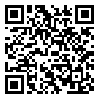Volume 5, Issue 15 (3-2014)
jemr 2014, 5(15): 147-178 |
Back to browse issues page
1- Azad University Khorasgan (Isfahan) Branch, Isfahan, Iran , n_samadpoor@yahoo.com
2- Azad University Khorasgan (Isfahan) Branch, Isfahan, Iran
3- , University of tabiat modarres,Tehran, Iran
2- Azad University Khorasgan (Isfahan) Branch, Isfahan, Iran
3- , University of tabiat modarres,Tehran, Iran
Abstract: (6894 Views)
The growth of non-communicable diseases, and the enormous costs of health care, has led policy makers to focus on “education”, as an effective instrument to improve the public health. Recent empirical studies show that education can improve health and increase life expectancy via ameliorating the life style. The main objective of this paper is to investigate the effect of education on health in Iran over the period of 1974- 2010. Health production function is defined based on the Grossman (1972) model. The empirical model has been estimated by using co-integration technique and error correction model. Separation of short and long-term effects and estimate of impact by education’s temporary and permanent lag time changes on health is considered the innovation aspect of this research. The results of model estimation indicate that there is a positive and long-term equilibrium relationship between health and education. Based on evidence obtained, education plays a key role in health improvement. Empowering people by investment in their education can prevent many non-communicable diseases. Diseases that are imposed by our incorrect life style. Today we believe that an active participation of elementary and high schools, higher education, and mass media can ameliorate the health statue of society.
Type of Study: Applicable |
Subject:
سایر
Received: 2013/09/17 | Accepted: 2014/06/3 | Published: 2014/09/14
Received: 2013/09/17 | Accepted: 2014/06/3 | Published: 2014/09/14
| Rights and permissions | |
 | This work is licensed under a Creative Commons Attribution-NonCommercial 4.0 International License. |



